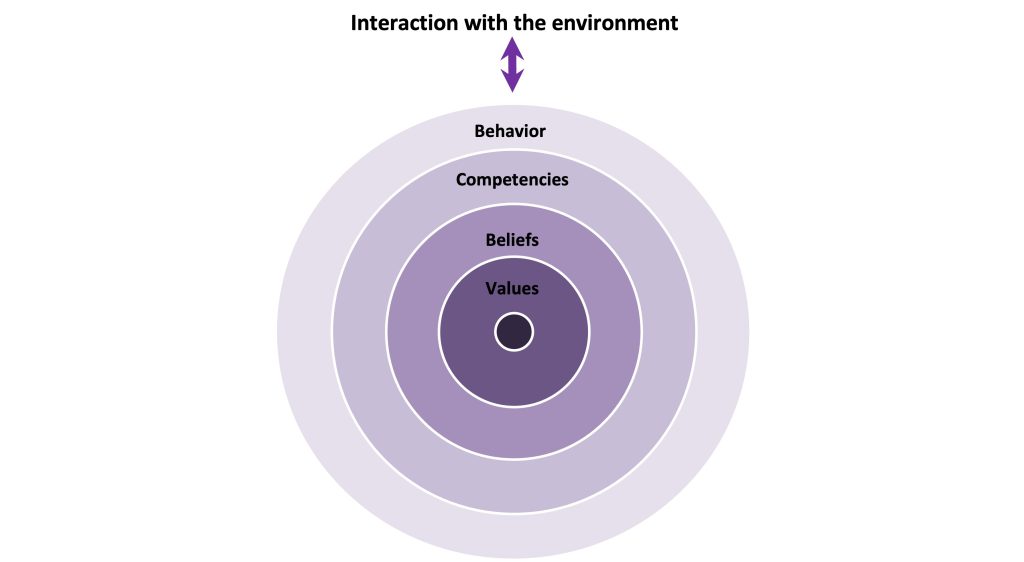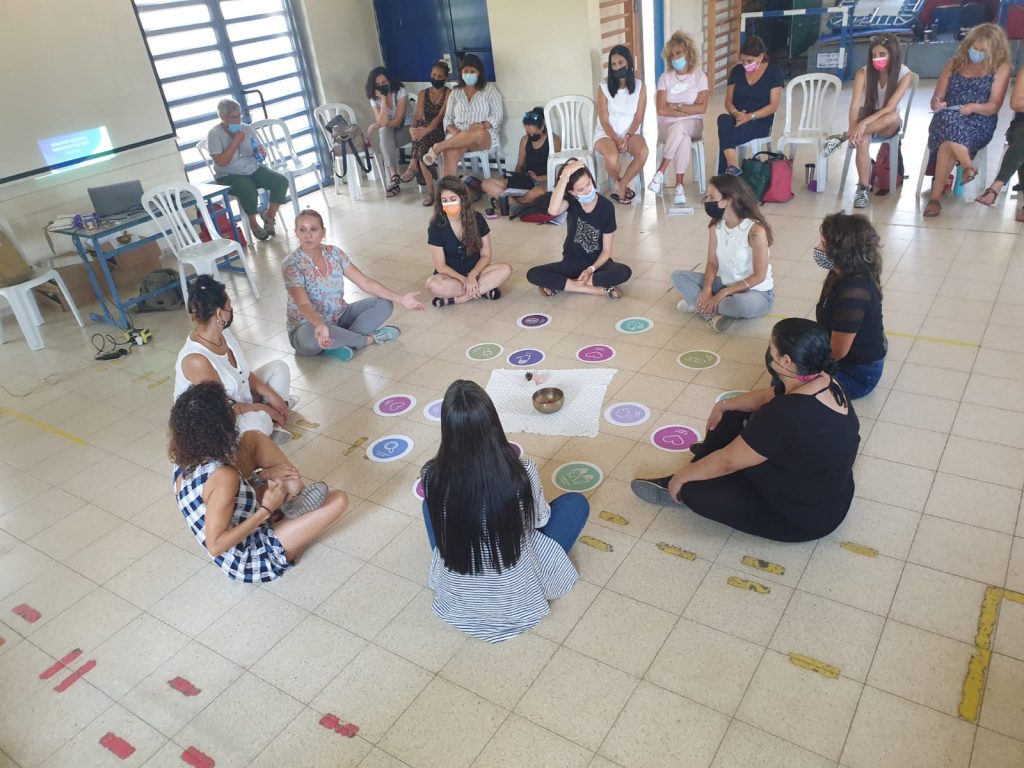Pedagogical examples: Purple Leadership Training
The Korthagen Onion Model

The Korthagen Onion Model is a model of teacher development and reflection, proposed by Dutch educator Fred Korthagen. The model suggests that teacher development occurs in layers, with each layer representing a different aspect of the teacher’s knowledge, skills, and attitudes. The outermost layer of the onion represents the teacher’s surface knowledge and skills, which are the most visible and easiest to change. This layer includes things like lesson planning and classroom management techniques. The next layer represents the teacher’s practical knowledge, which is more deeply rooted and harder to change. This layer includes things like the teacher’s beliefs about teaching and learning, and their understanding of subject matter. The innermost layers represent the teacher’s core beliefs, values, identity and sense of purpose, which are the most difficult to change. These layers include things like the teacher’s personal philosophy of education and their fundamental beliefs about the nature of human beings and the world. All the layers are influenced by and influence the environment in which the teacher operates. The model suggests that effective teacher development should focus on all layers of the onion, helping teachers to continuously reflect on and improve their surface knowledge and skills, while also exploring and challenging their deeper beliefs and values. This can help teachers to become more effective and responsive to the needs of their students, and to continually grow and improve as educators.
During the Purple Leadership Training, school leaders are introduced to Korthagen’s model not only as a tool for their personal development as teachers, but first and foremost as a tool for their development as mindful school leaders charged with fostering a profound organizational change. Through the model’s framework, participants are invited to continually and mindfully reflect on and question their mental models and perceptions of what a school leader and a teacher is and how they are supposed to act in the world with a beginner’s mind and a fresh approach. Since the model shines a light on the complexity of developing as a school leader (e.g. noticing whether there is an alignment or misalignment between the onion’s various layers as reflected in the a school leader’s ability to act according to their inner values, beliefs and sense of purpose, while thinking about “the bigger picture” – how this influences and is influenced by the schools’ environment), it nurtures systems thinking. The invitation to continually reflect upon one’s self and one’s school through the model’s framework also fosters systems sensing and a culture of continuous learning and development, with the final goal is to strive to a high level of coherence between the different levels represented in the model.
The Capabilities Model and the Icon Kit

The Sagol Purple School Program nurtures mindfulness and SEL skills at various levels: the personal, interpersonal, pedagogical and organizational level. At the Purple Lab, we have developed the Capabilities Model, which is a conceptual framework presenting which capabilities we are nurturing in schools, and how they are expressed at the different levels. This model was inspired by the SEE matrix, with various adaptations and additions. At the heart of the model are core mindfulness qualities: awareness, pausing, an open and non-judgmental attitude and kindness and compassion. From these core qualities, derive various SEL skills which are expressed in expanding dimensions in school: the personal dimension, the interpersonal dimension, the pedagogical dimension and communal-organizational dimension. The Capabilities Model is accompanied by an Icon Kit, with each icon depicting a graphical representation of one of the qualities or skills from the Capabilities Model. These icons are used in the various activities taking place as part of the program (e.g. leadership training, mentoring sessions, staff training) and in the schools (e.g. staff meetings, lessons). When each activity starts with a honing of a certain intention with the icons (“In this staff meeting I choose the Beginner’s Mind Icon, and this is what I intend to nurture during the meeting”), this supports the establishment of a “Purple” language and culture, supporting a deep and meaningful implementation of mindfulness and SEL across the organization.

